The capitals of Argentina and Uruguay are only 200 kilometres apart. The fastest way from Buenos Aires to Montevideo is over the water, taking just under three hours each way. This makes a day trip feasible if the high price doesn’t stop you.
I recently tried the fast ferry from Buquebus and opted for the “Business Class” for a few extra euros. Whether it’s worth it and what else to consider is detailed in this review.
Table of Contents
For reference, here’s a map of the journey across the Rio de la Plata:
Booking
Originally, I was only looking for an affordable way to get from Buenos Aires to Lima in early January 2024. Award flights were unavailable during the peak travel season, and paid tickets (including luggage) would have cost €400 or more. As an alternative, I booked an award flight from Montevideo and combined it with a day in Uruguay.
There are two ferry companies offering crossings from Argentina to Uruguay: Colonia Express covers the Buenos Aires – Colonia del Sacramento route and offers a bus connection to Montevideo. Buquebus also stops at Colonia but provides a faster direct connection to Montevideo as an alternative.
I booked the ferry ticket just one day before departure. At that time, Buquebus had a 25% discount coupon, resulting in the following prices when paying in Argentine Pesos:
- Direct connection Buenos Aires – Montevideo (2h 30min):
- Approximately €65 in economy class
- Approximately €75 in business class
- Approximately €110 in first class
- Ferry + Bus Buenos Aires – Colonia – Montevideo (approx. 4h):
- Approximately €60 in economy class
- Approximately €60 in business class
- Approximately €60 in first class
I didn’t note the prices exactly, but for the connection with a transfer, the difference between economy and first class was indeed only two or three euros. Alternatively, I could have taken the Colonia Express ferry + bus for around 45€, where there is only one class.
Ultimately, the surcharge for the direct connection seemed reasonable, and the same goes for the business class. So, I paid €75 (around 83,000 ARS at that time) for direct business class. Not necessarily cheap, but better than €100+ for a flight.
Check-in
Buquebus recommends being at the terminal at least two hours before departure, according to their website. This seems exaggerated, at least for travellers without a car. I arrived at the terminal at 06:10, and there was still plenty of time before the 07:15 departure.
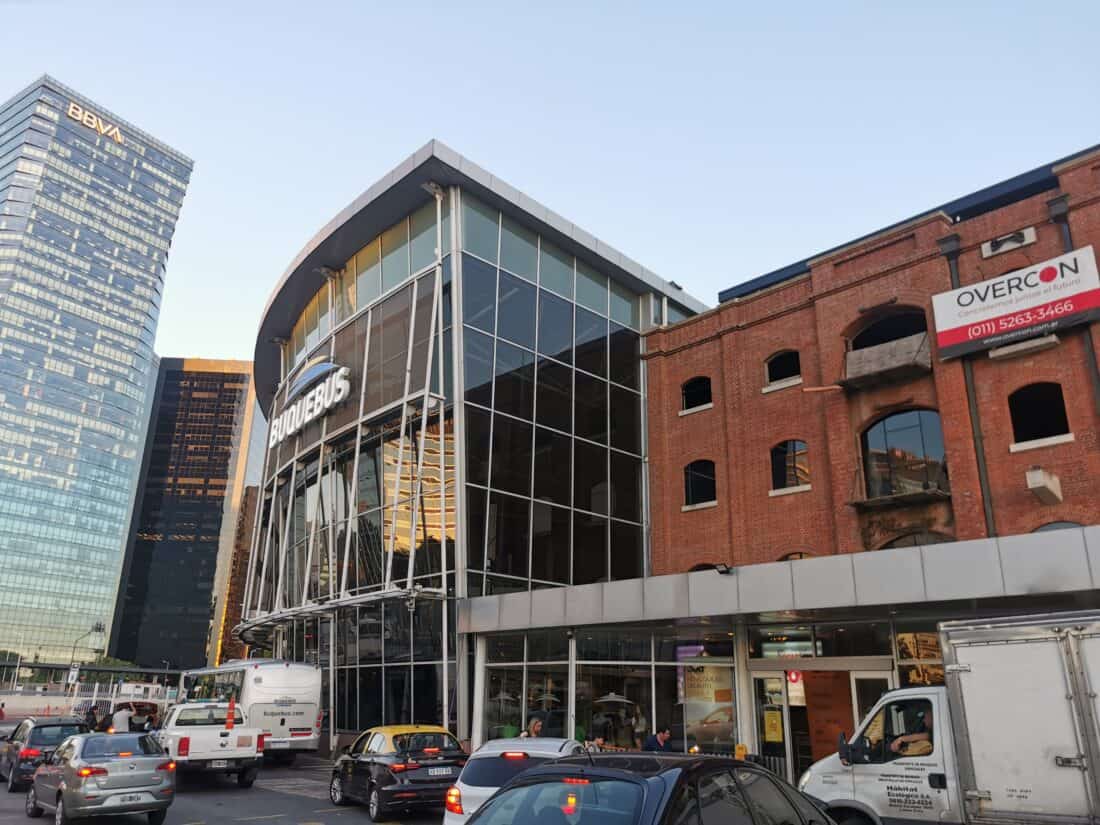
The terminal is located near the city centre and would be within walking distance without luggage. The interior seemed recently renovated, as everything appeared quite modern. Upon entering, you are greeted by numerous check-in counters:
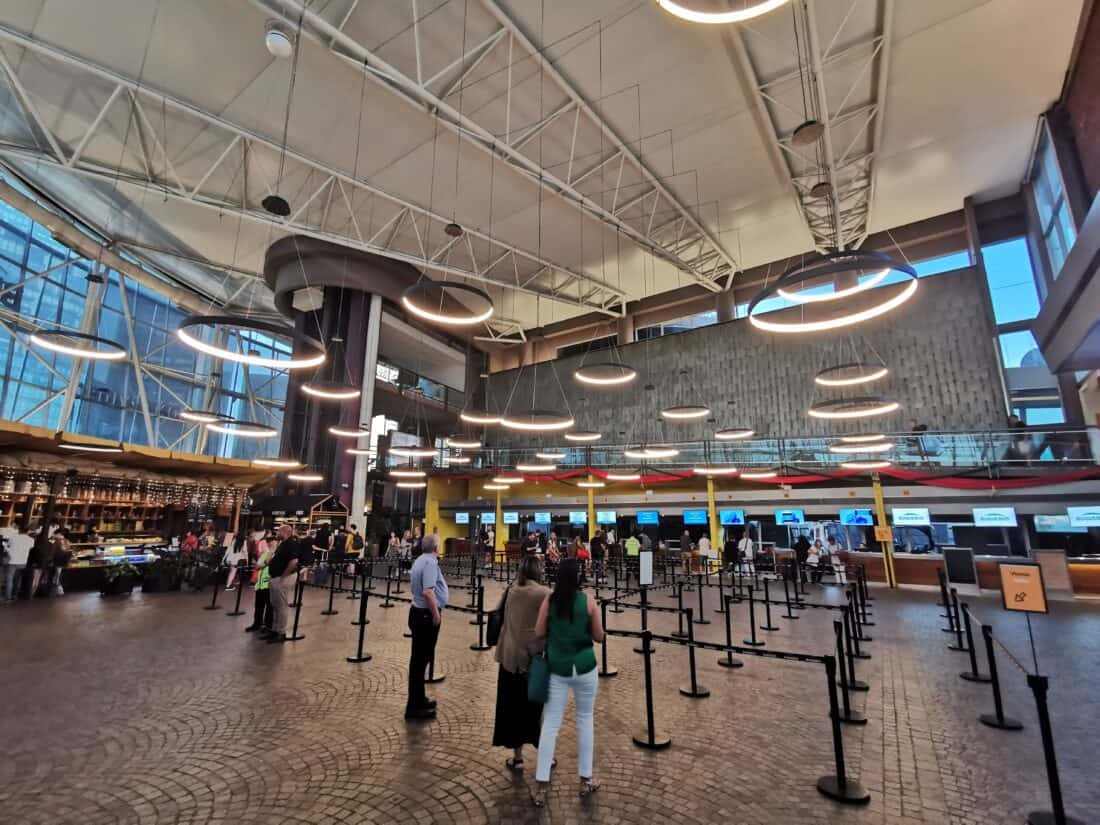
I was initially a bit confused because some counters mentioned Francisco and others mentioned Montevideo. Later, it turned out that Francisco was just the name of the ship and not another destination. The staff guided me correctly in any case.
Larger luggage must be checked in, with a baggage allowance of only 20 kg. That was fine with me, so I didn’t have to drag all my luggage through the port and ship. I checked in my large travel bag and received a small receipt as proof. I didn’t get the impression that dimensions or weight were checked, but it might be challenging with two large suitcases.
Overall, I spent less than a minute at the check-in counter, and everything was done. There are separate counters for all three travel classes, but there was no queue for me. A ticket does not need to be printed in advance. Those who show their passport receive the corresponding boarding pass directly.
Security & Passport Control
The processes at the Buquebus terminal are similar to those at an airport. After dropping off luggage, there is a security check. The luggage is briefly scanned, but belts, shoes, etc., can remain on the body, and even the wallet in my pocket was not an issue. Liquids are not technically allowed, but I only found out later, so the check was somewhat lax.
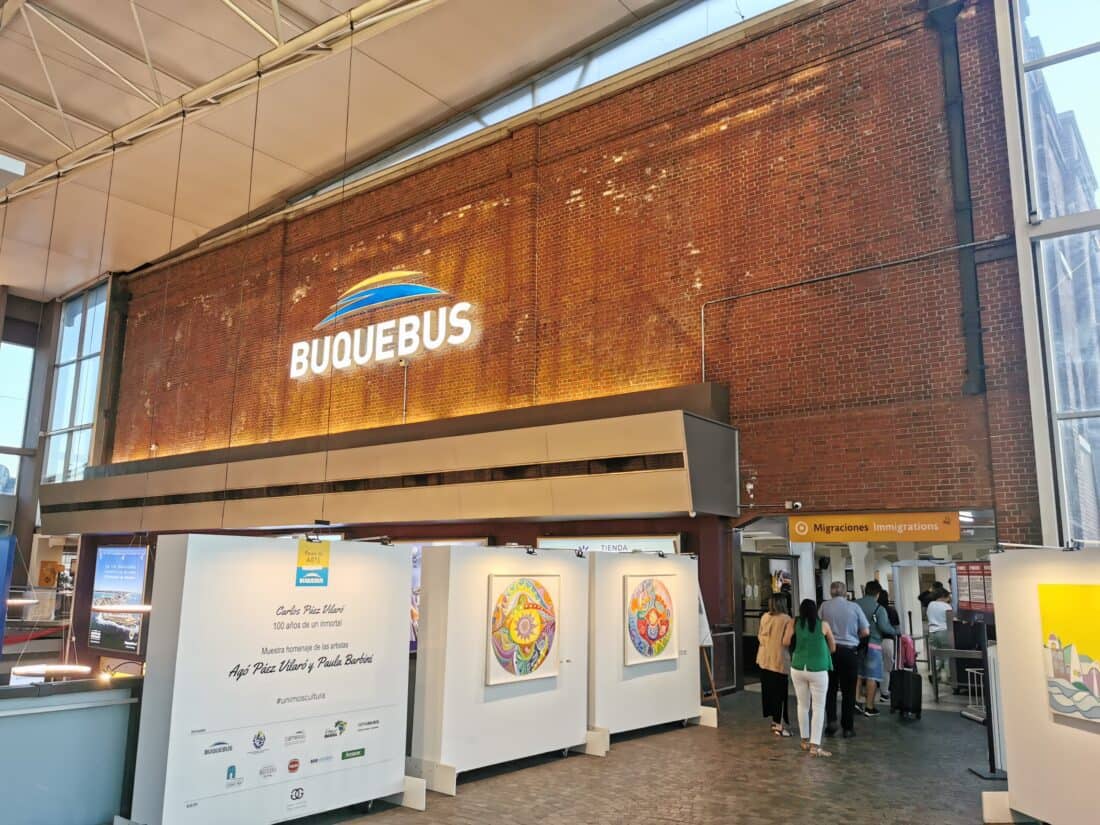
Then comes passport control. Both the exit from Argentina and the entry into Uruguay already took place at the starting port of Buenos Aires. So, first, you go to the Argentine authorities’ counter and then to the Uruguayan colleague.
Just 10 minutes after arriving at the terminal, I had gone through all the steps and stood in front of the inconspicuous VIP sign.
Lounge
Access to the “Lounge” is included with all business and first-class tickets. There are some leather seats (with and without a table) and toilets. However, the room is dark and not particularly inviting overall. Next to the seats is a small bar counter. Coffee is probably served there for free, but everything else comes at a cost. A bottle of water (500 ml), for instance, costs almost €2.
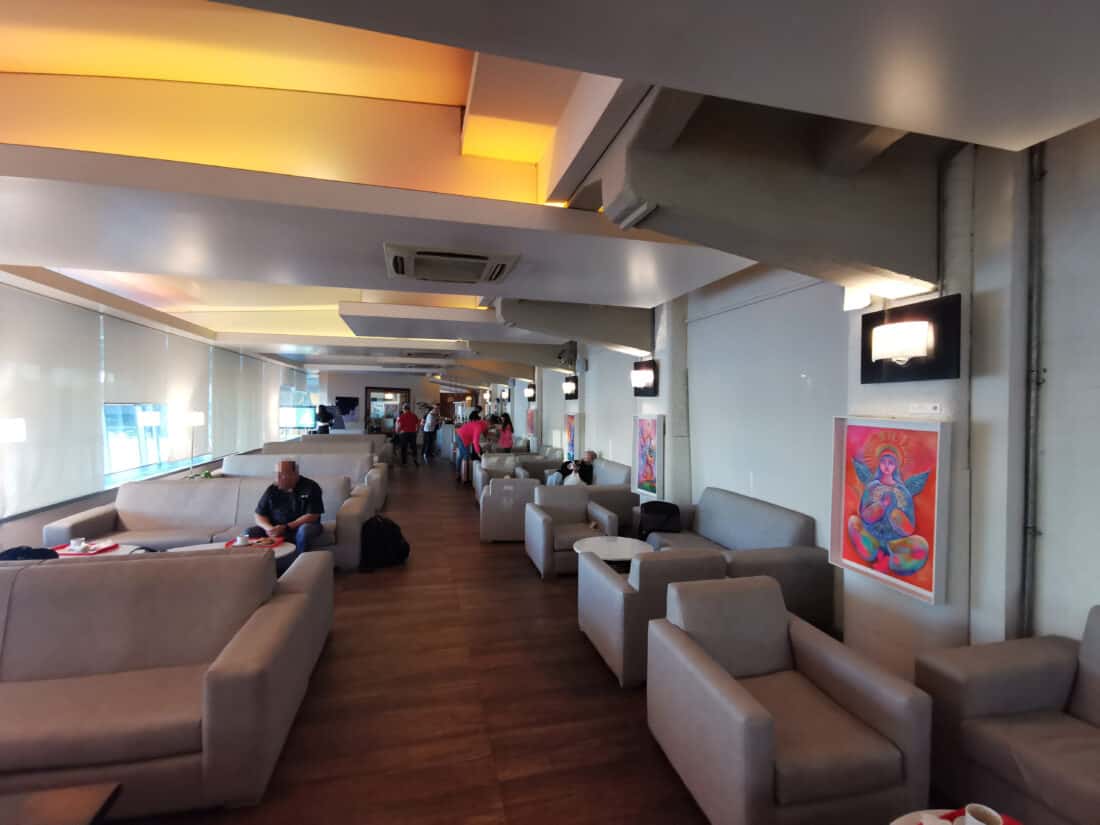
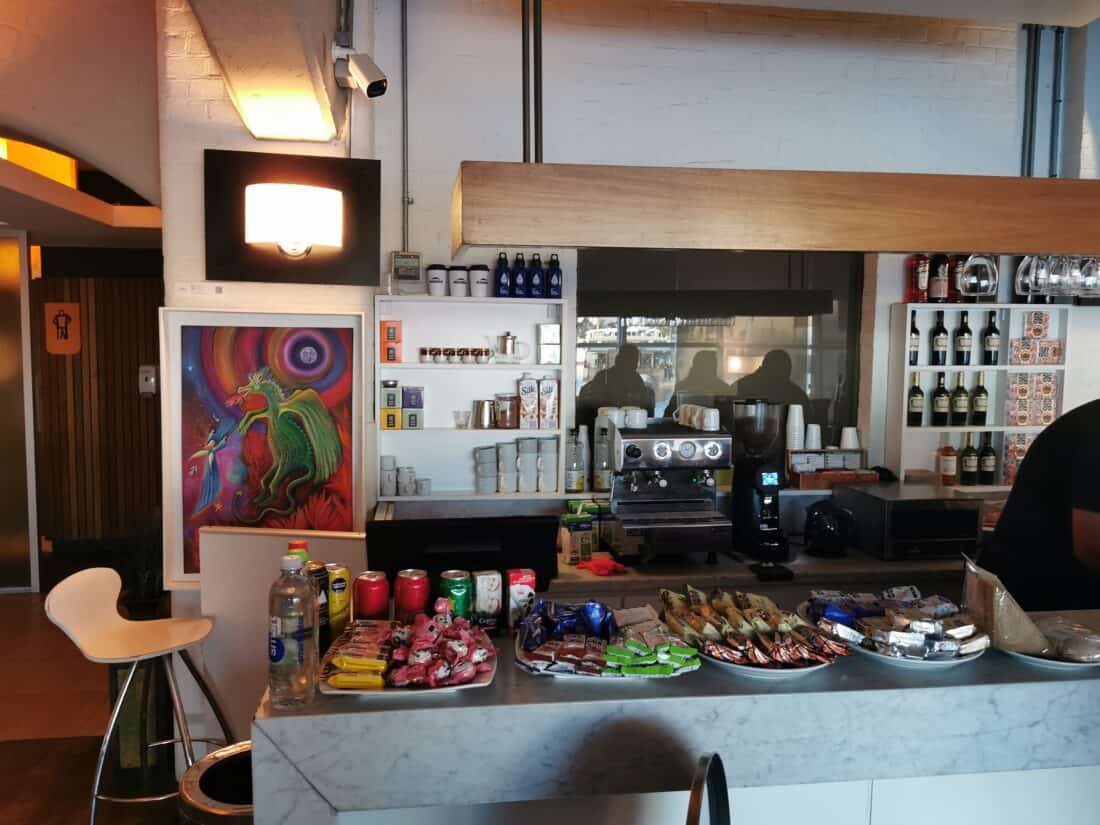
I spent only a few minutes in the lounge because business class passengers were allowed to board the Francisco 50 minutes before departure.
Comfort
On the ship, you then go upstairs to business (and first class). The regular economy class is spread across both decks. There is a total capacity for up to 950 passengers and 135 cars. However, during my journey (Tuesday morning), I’d guess there were “only” about 300 passengers on board.
Business Class
The business class primarily consists of wide leather seats in 2-seater groups. It looks something like this:
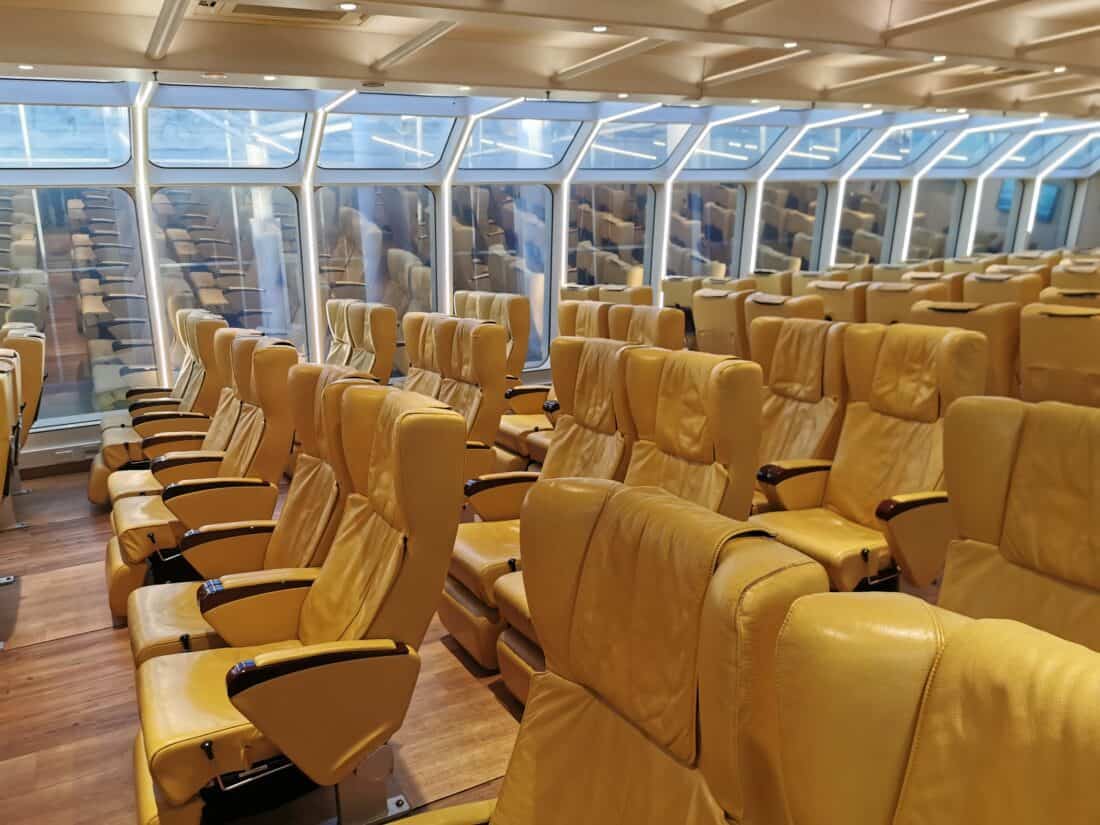
The seats can recline quite far and also have a leg rest. Overall, it’s comparable to seats in premium economy on a plane, only better padded:
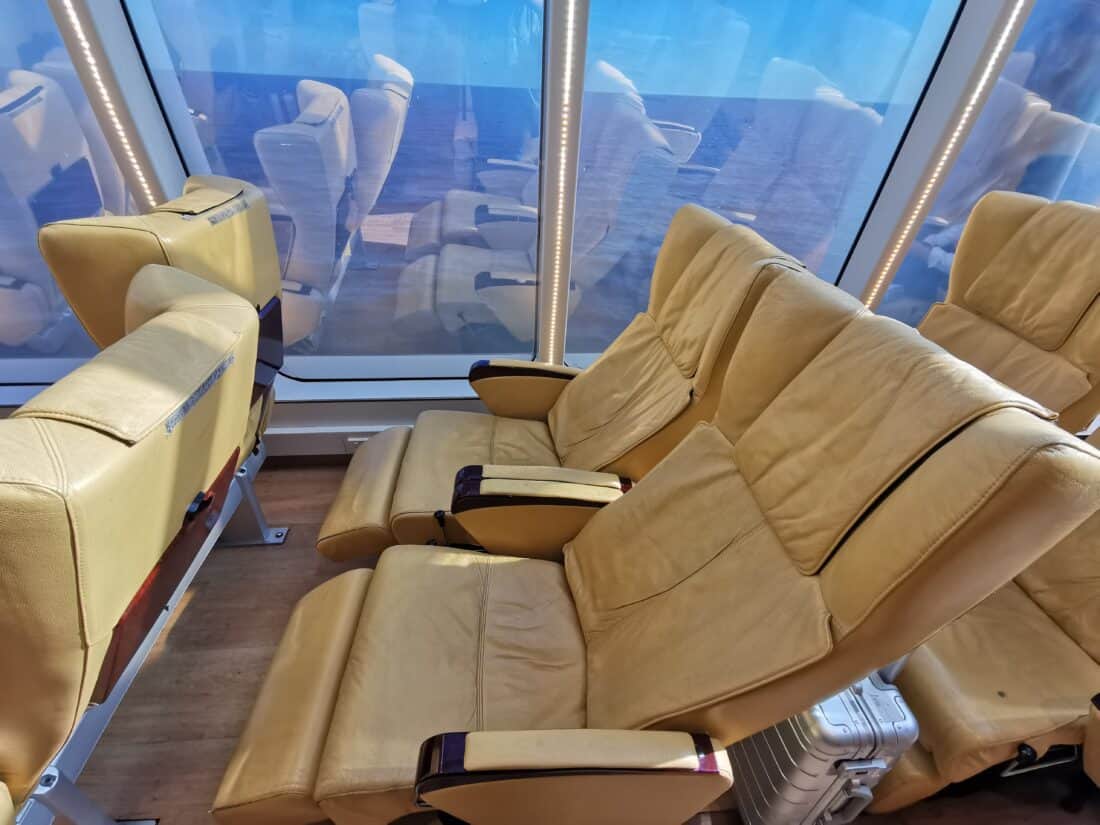
Overall, I was quite satisfied with the comfort on this three-hour journey because the seat was genuinely comfortable. The only drawback is that the tables are a bit small and, especially, too far away to work comfortably with a laptop. Therefore, I preferred to use the laptop on my lap. Power outlets are adequately available, at least at the window seats.
Economy & First Class
Now you might be wondering: What about economy class? The difference in seat comfort is actually small. The recline is somewhat limited, and there is no leg rest, but even that should be entirely sufficient for 3 hours. Another difference is the atmosphere. In business class, the windows go up to the ceiling, while in the regular tourist class, the cabin is less inviting.
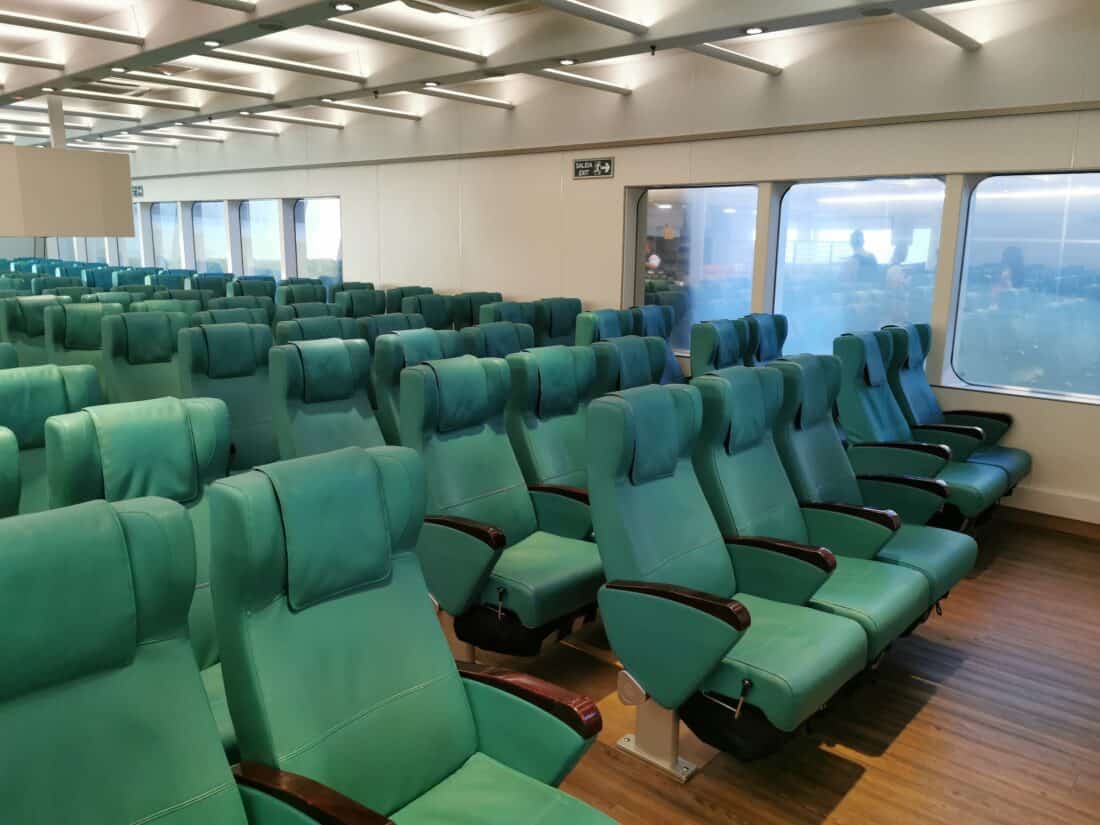
The occupancy in business class was slightly lower than in economy. But even in the cheapest class, there were still free rows of three towards the middle of the journey, if it didn’t have to be a seat right by the window. This may not always be the case and surely depends on the day of the week and time.
There is also a first class, which includes seats that can tilt 180° and (photographed through the glass door) looks like this:
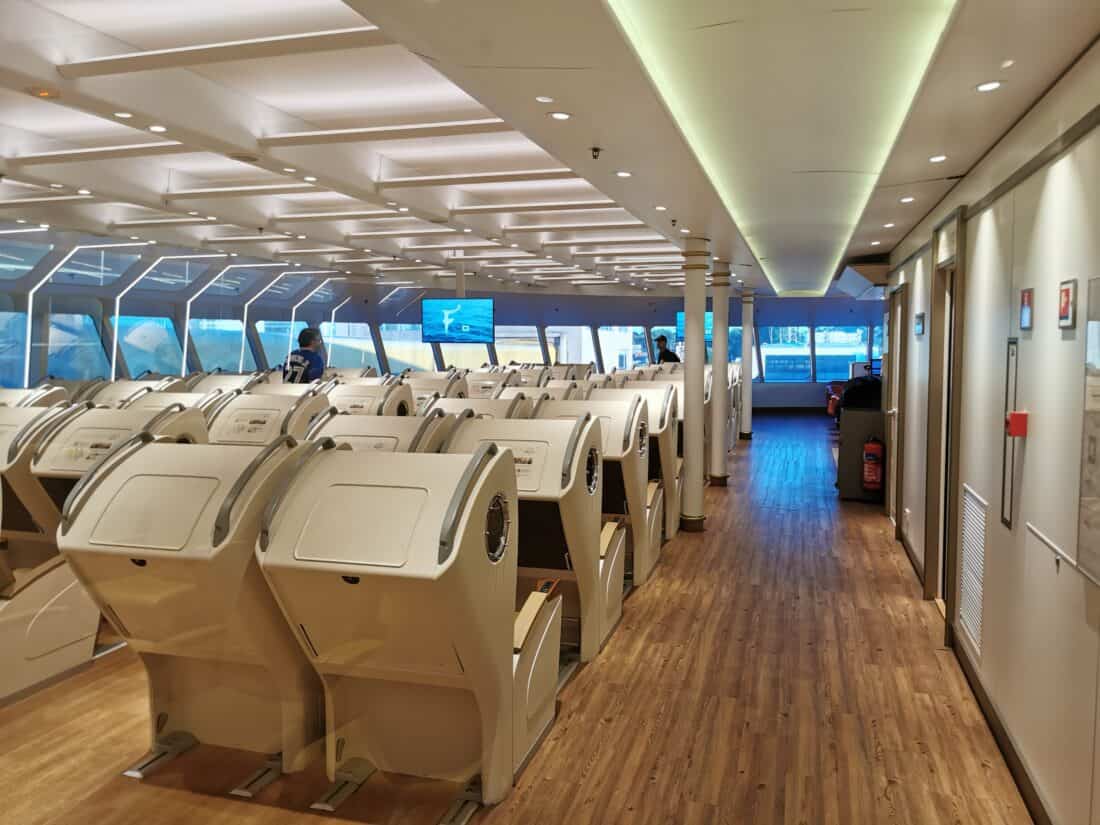
Food & Drinks (Onboard Shop)
The included onboard service is limited to… nothing at all. Even in business class, all beverages and meals must be paid for.
The price level is (especially for Argentine standards) rather high. A 500 ml bottle of apple soda costs more than €2.50. Packaged sandwiches are available for €4 to €5. Payment can be made in the local currencies of Argentina or Uruguay or by credit card (then in USD).
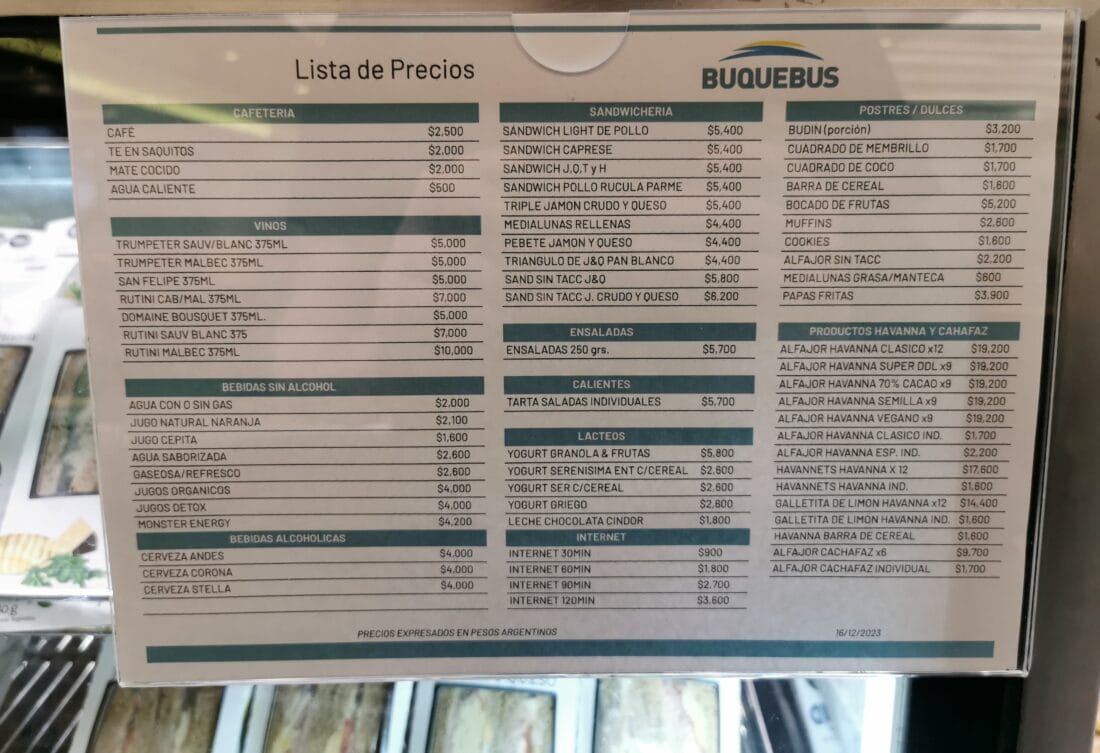
Crossing to Montevideo
The catamaran Francisco holds the world record as the fastest ferry globally. The maximum speed is 107 km/h with a usual cruising speed of 95 km/h. When I checked with GPS for a while, we were “only” travelling at 80 km/h (43 knots).
Unfortunately, there is no outdoor deck. At the high speed, it would be very windy there anyway. Still, I would have liked to observe the entrance to Montevideo. The view from the large windows is unfortunately quite hazy, as the following photo shows:
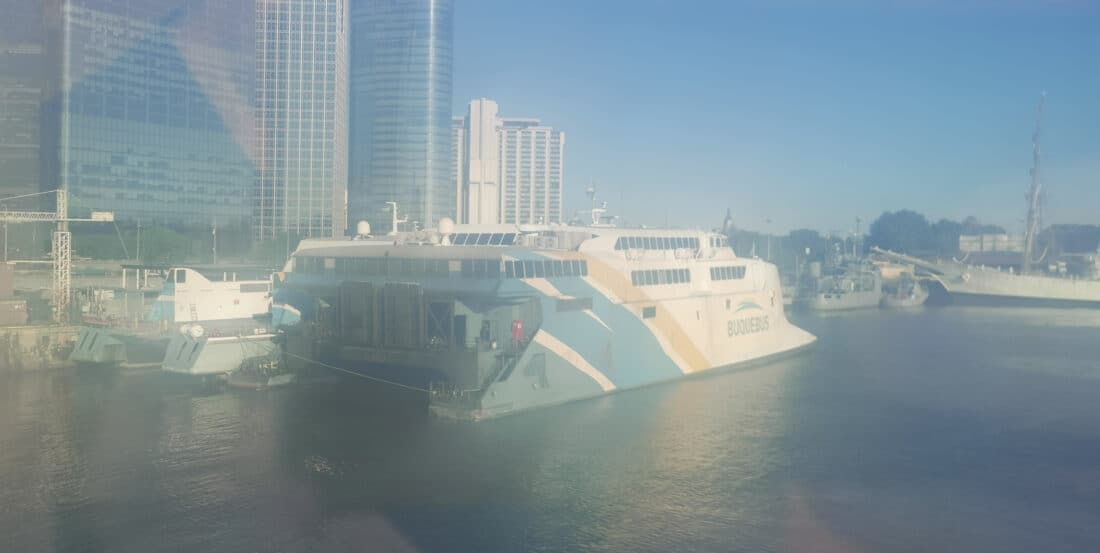
There were hardly any waves, so the fast journey was barely noticeable. You can feel more of the vibrations of the engine than any noticeable rocking. On the lower deck, the vibrations were stronger but still bearable.
Presumably, the journey is always quite calm due to the protected bay in the Rio de la Plata. In any case, the rocking was by no means comparable to the ferry from Denmark to Norway—or even the Drake Passage to Antarctica, which I had crossed just two days earlier.
We finally reached Montevideo with about a 10-minute delay after almost three hours of crossing. Business passengers are allowed to disembark first, but in the end, the queues got somewhat mixed. In the arrival terminal, customs must be passed, and you are then officially in Uruguay.
WiFi?
The ship does have its own WiFi network, but a PIN was required, which was nowhere to be found. According to the staff, only text messaging works anyway, so I didn’t bother trying further.
At least, after departure, Argentine mobile network reception was available for almost an hour, and even afterwards, there was a sporadic network from Uruguay or Argentina. Therefore, I preferred to use the smartphone’s hotspot rather than dealing further with the troublesome WiFi.
Other
On the ground floor, there is a small currency exchange. Dollars are welcome there: as an emergency stash, I exchanged 20 USD into Uruguayan Pesos and paid only a little over 2% fee compared to the reference exchange rate. If I had exchanged Euros, it would have been almost a 10% surcharge.
Of course, there is also a large duty-free shop. I briefly looked at it but didn’t buy anything. A bar of Ritter Sport chocolate costs at least US$3 (~€3), sunscreen over US$10 (~€9), and a bottle of Absolut Vodka US$28 (~€26), etc. None of it seemed particularly attractive to me.
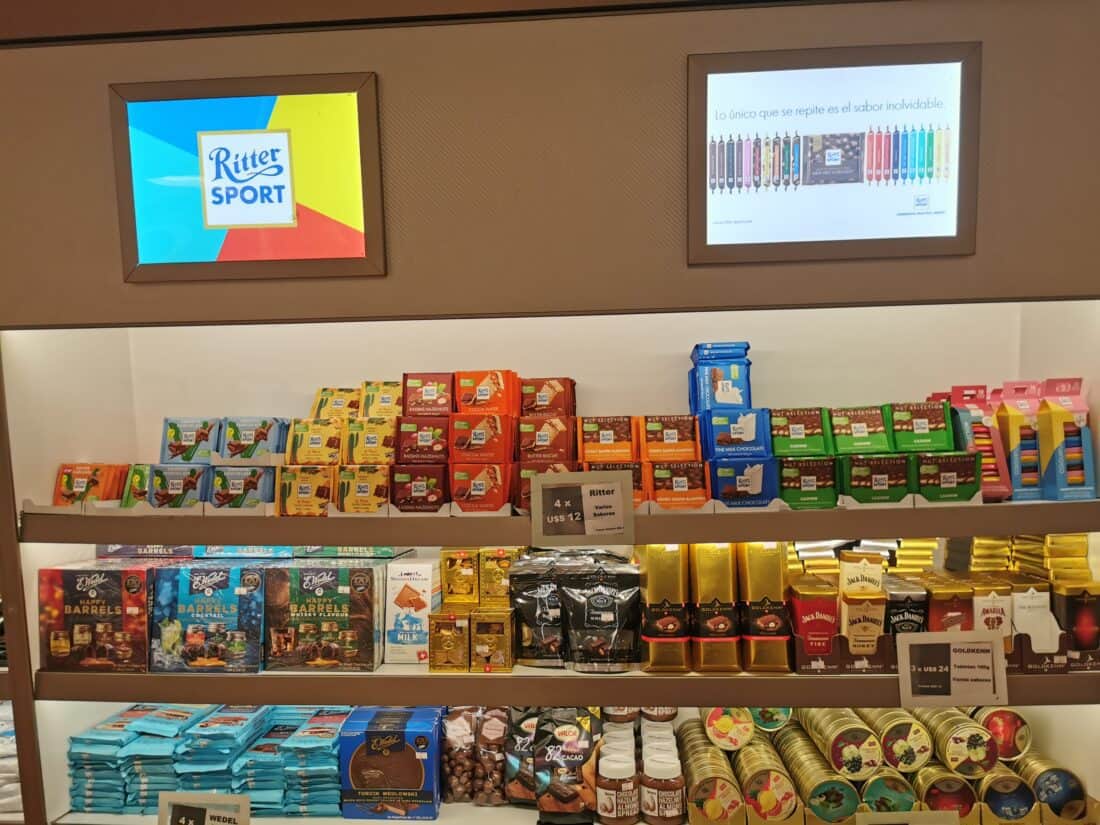
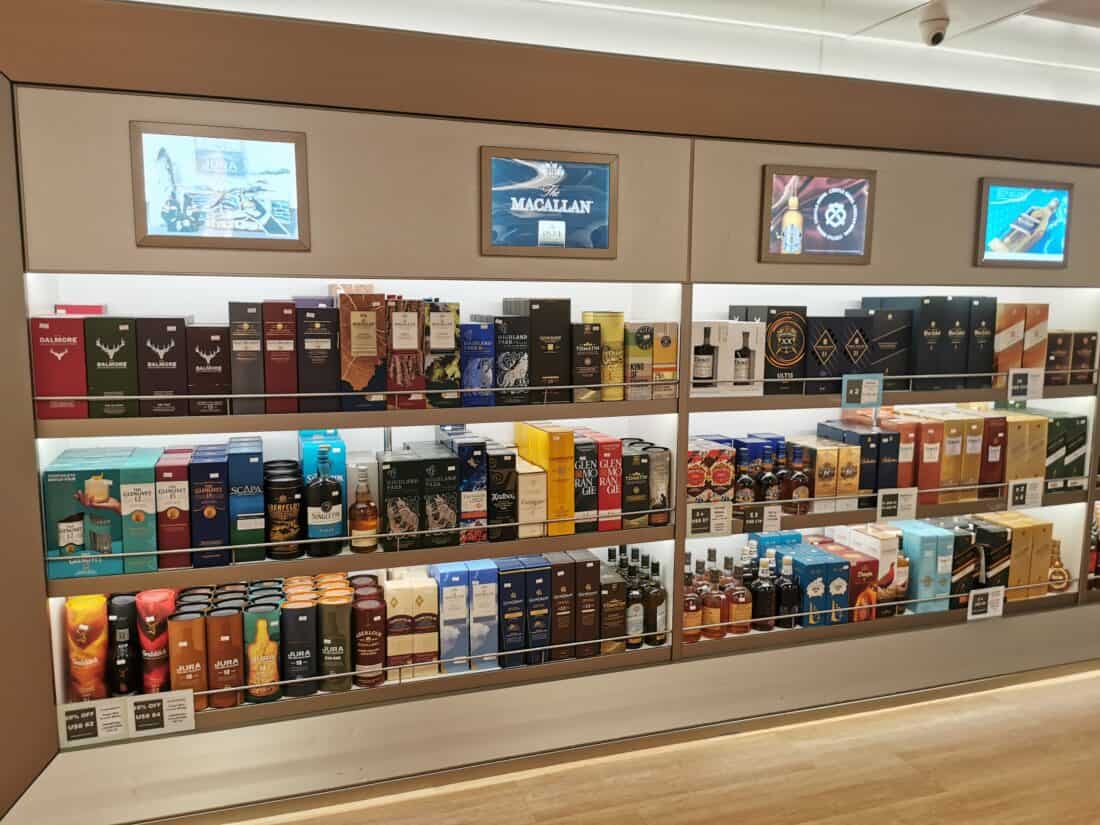
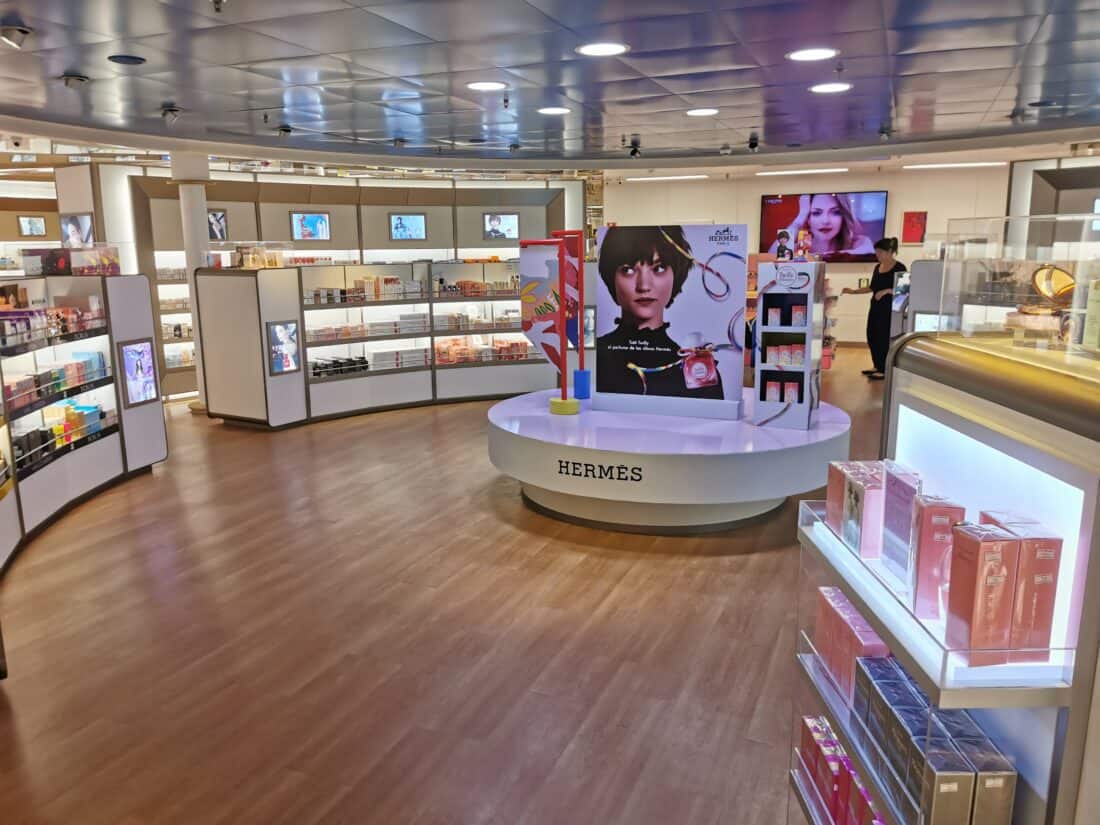
Most announcements were made exclusively in Spanish. Therefore, I didn’t understand anything, and the onboard staff also spoke little or no English. Only the brief safety video and an announcement before arrival were available in English.
- Check-in & Boarding
- Lounge
- Speed
- Comfort
- WiFi
The Buquebus is a fast and pleasant way to get from Buenos Aires to Montevideo. However, the business class offers few advantages, so you can confidently book the cheapest option. For the business class to become a true business class, two things are missing: functional WiFi for uninterrupted work and tables where you can work comfortably.
Translated by Ditmar
Cover Picture: © Buquebus
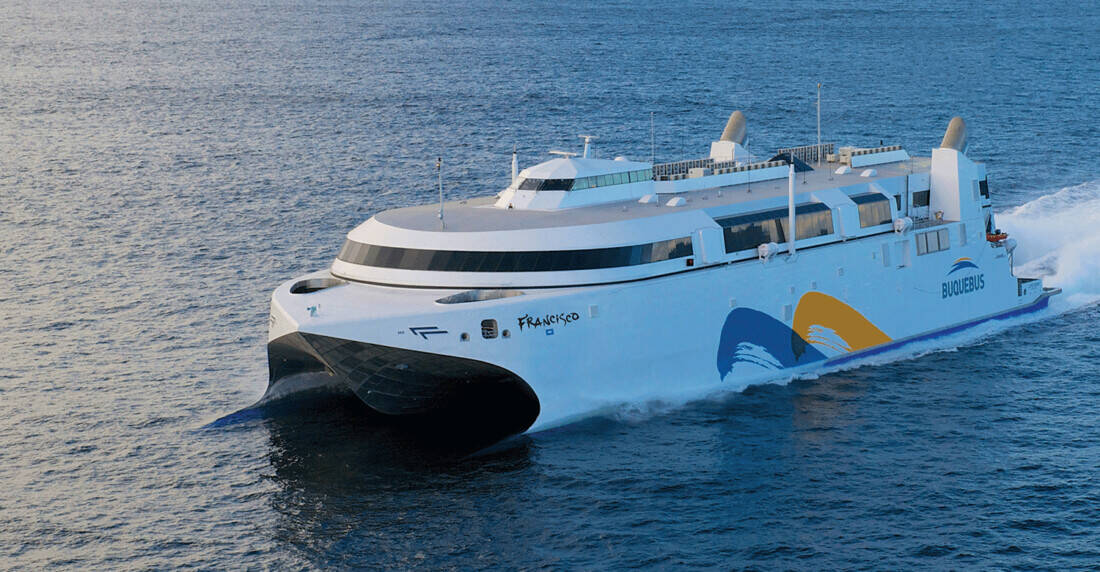
Comments (2)
Incredibly useful information and all remained accurate for my trip end March’24. However I did this in reverse from Montevideo direct to Buenos Aires. Only comments I would add are –
Check-in in Montevideo was very simple and well organised. Only a few counters and then go straight to immigration to the right hand side of the building as you enter.
Immigration is also combined leaving Uruguay. You will be stamped out from one counter and then asked to visit another for Argentine immigration.
Everyone likes to queue up well before boarding, so long lines form but are well organised. Only really seemed necessary in order to grab a better seat.
When lots of people get up just before arrival, it’s most likely they are going to their vehicles. Foot passengers can remain seated until docked.
Realmente me sorprende el nivel de detalle y la veracidad con que se informa,en este caso, el viaje en Buquebus en el barco Papa Francisco desde Buenos Aires a Montevideo.Soy argentina y conozco bien el.Buquebús, pero hay precisiones que no conocía.Incluso miden la velocidad por GPS.Lástima no tener una página comoTravel Dealz para los latinoamericanos.En fin ,los felicito y mando saludos.Sigan asi.